Unionism was on the rise in the post-war era. Increased competition from Japanese Canadian fishermen combined with the arrival of returned soldiers met with the realities of an economic depression and falling fish prices. The Fraser River Fishermen’s Protective Association evolved into the British Columbia Fishermen’s Protective Association in 1919. In the post-First World war era, the Federal Department of Fisheries removed restrictions on cannery licences and granted open access to industrial fishers. The restrictions around food fishing remained.
The population of the Maple Ridge area in 1921 included a number of railway workers in its count of 7,829 individuals. The majority of men were farmers and mill workers of the 2,460 men over 16—only 24 men listed their occupation as fisherman. All of those twenty-four men were involved specifically in the salmon fishing industry but none of them were the same families from the 1891 census.
The Vancouver Province newspaper reported on April 28, 1921 that two returned soldiers had been hired by the provincial fisheries department to investigate the salmon runs due to the “continuous and alarming decline in the number of sockeye that annually reach the spawning beds.”
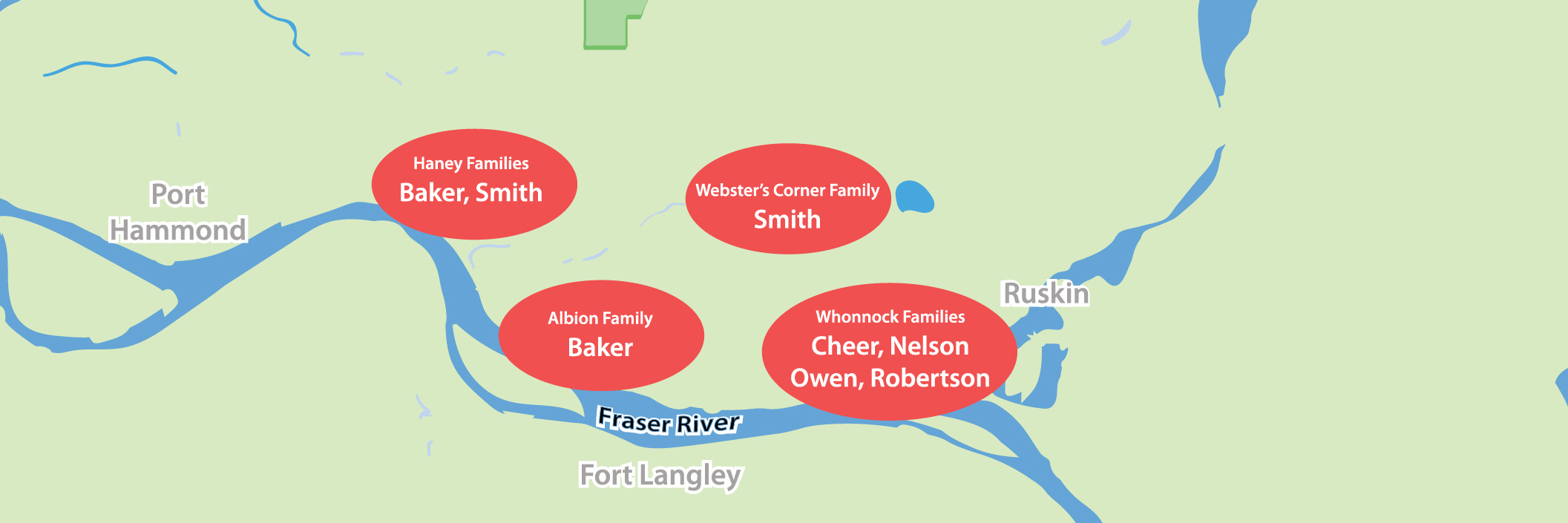
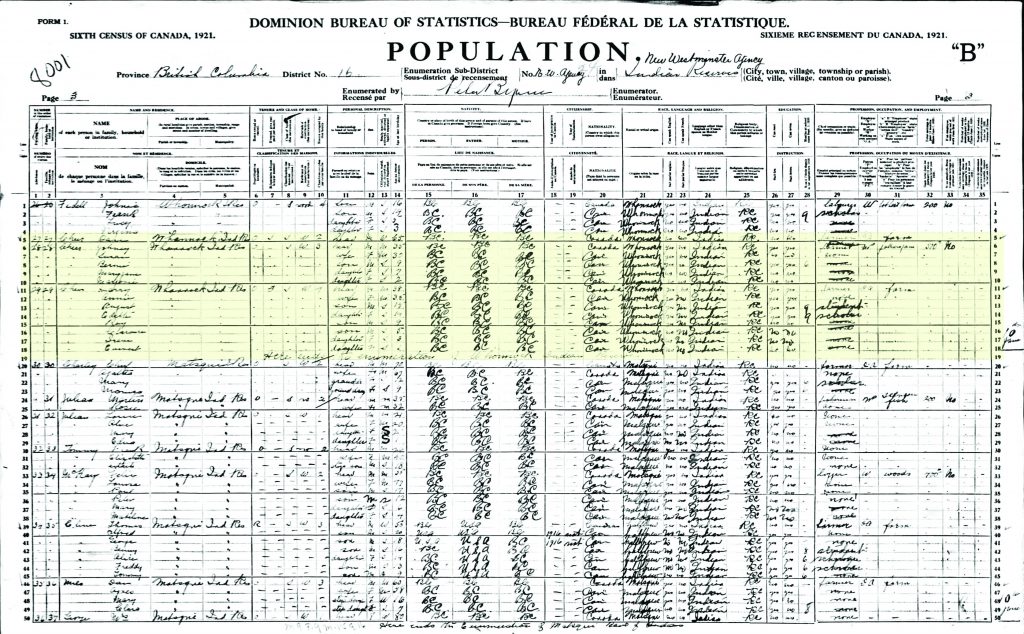

Courtesy the Hertzog (Baker) family
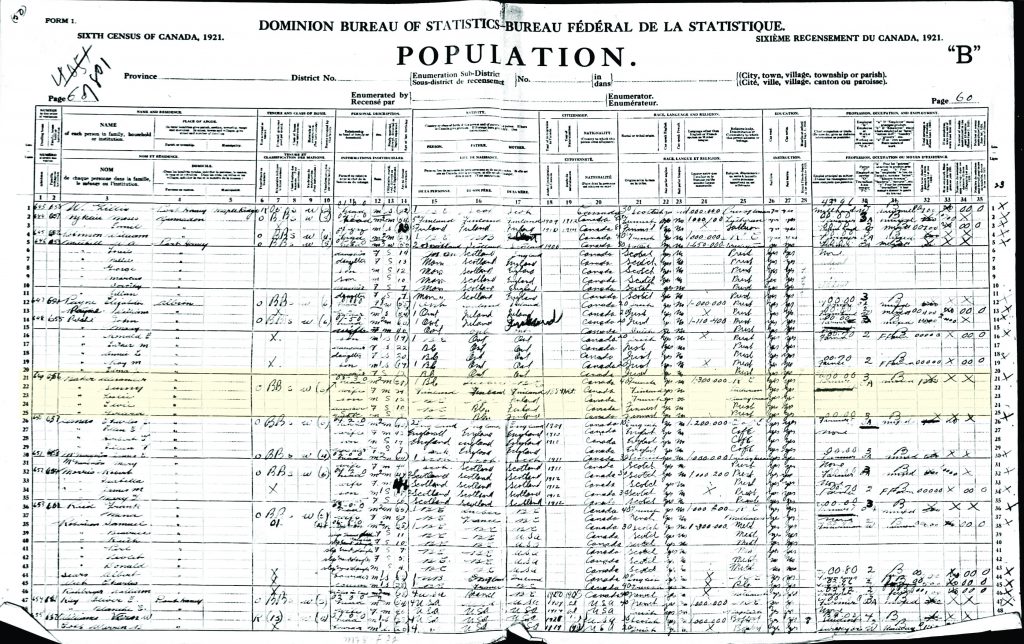
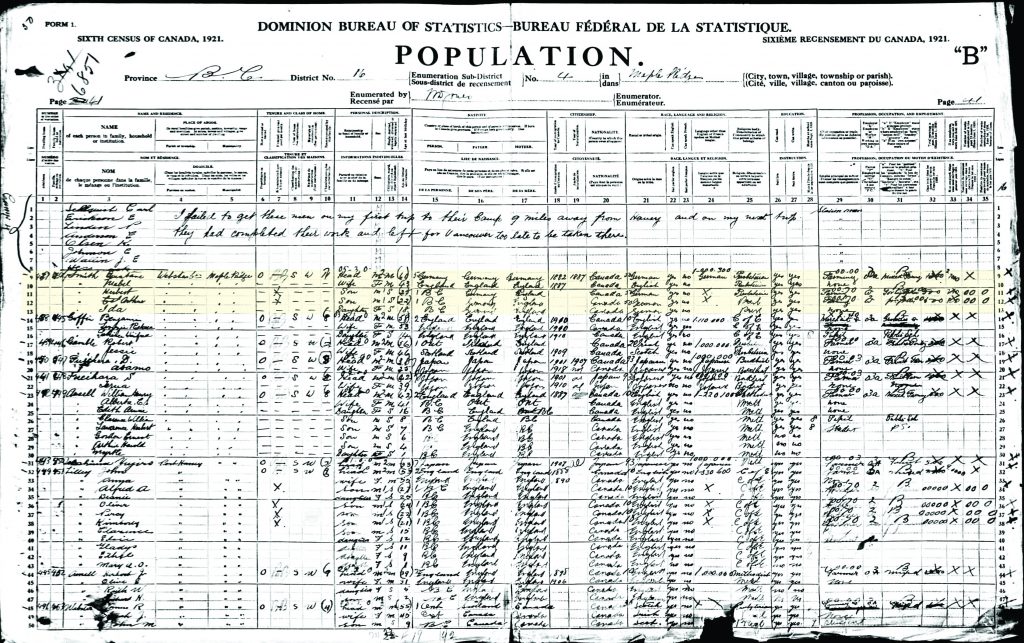
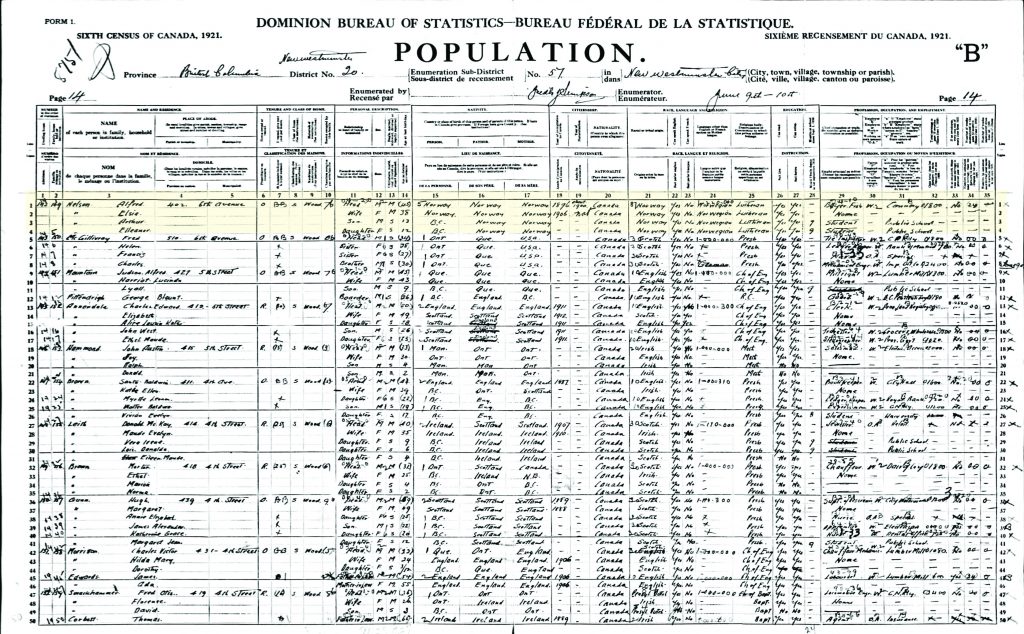
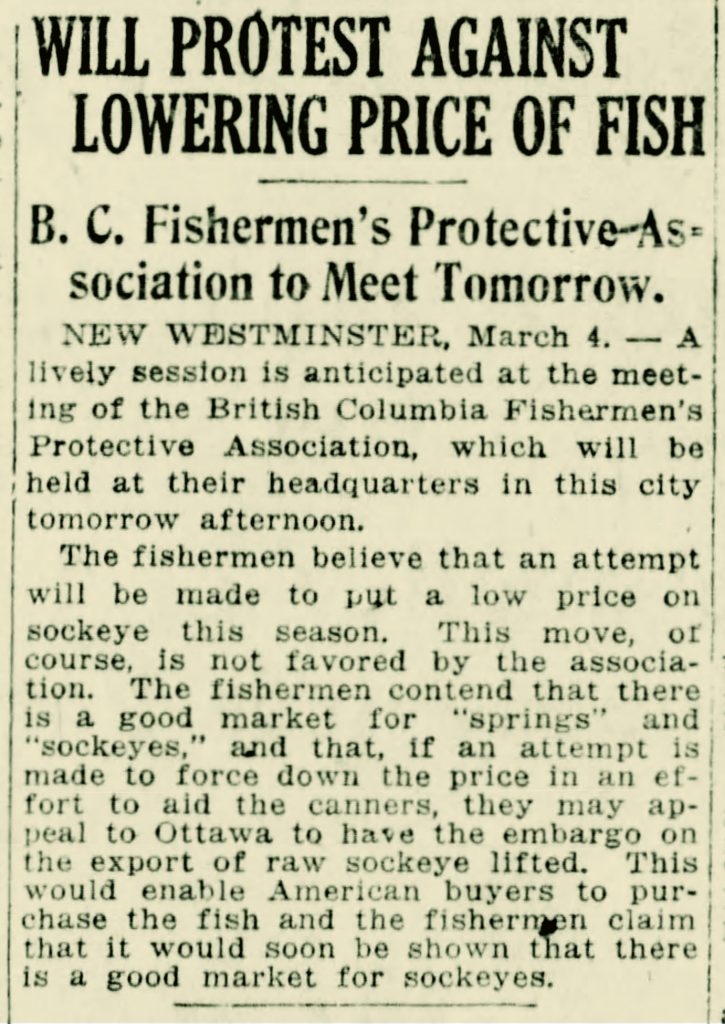
The 1921 census recorded Daniel Cheer as a sixty-five-year-old widowed farmer, living alone on the Whonnock Reserve in a two-room, wooden home.[i] His sons, Johnny and Harry, and their families also lived on the reserve and listed their occupations as farmers.
Philip Cheer, son of Bill Cheer and Mary Antoin, and grandson of Daniel, drowned in the Fraser River near Whonnock on September 16, 1927.[ii] The October 1, 1927 Province newspaper stated “he has been last seen when going out in his boat to attend to his net.” Daniel Cheer died of heart disease in January 1929.[iii] When widowed Harry Cheer married Mary Nowell (nee Wassaladza) from Chilliwack in 1931 he listed his occupation as fisherman.[iv]
Gustav Smith, his wife, two sons, and one daughter lived in Webster’s Corner in 1921.[v] Gustav and his sons are all recorded as farmers. Gustav Smith died in 1950 and is buried in Maple Ridge Cemetery.[vi]
Alexander (Sandy) Baker is listed as a farmer on the 1921 census, however the Wrigley’s British Columbia Directory for the same year lists his occupation as fisherman.[vii] His son, Leslie Charles Baker, started working as a teenager in the 1920s in a variety of jobs. He worked at the Haney Brick Yard, on the tug boats on the Fraser River, the Harrison Lake Logging Camp, and did gillnet fishing on the Fraser River and River’s Inlet.[viii]
In 1921 Alfred Nelson, Ole’s son, was a fish buyer for a cannery.[ix] Later Alfred became a proprietor of the Johnston Fishing & Packing salmon cannery, known as the Glenrose Cannery, in Delta.[x] In 1922, Dougal Harris, husband of Anna Christina Nelson drowned in Pender Harbor after falling off his fishing boat.[xi] Nils Christian Nelson recorded his occupation as a fisherman for fishing, deep sea and inshore in the 1921 census, however, he and his family were living in Langley.
[i] Sixth Census of Canada, 1921. RG 31; Folder Number: 15; Census Place: 15, Fraser Valley, British Columbia; Page Number: 3. Ottawa, Ontario, Canada: Library and Archives Canada, 2013. Series RG31. Statistics Canada Fonds.
[ii] Death of Philip Cheer, Informant his brother Patrick Cheer, British Columbia Death Registrations (British Columbia Archives) Registration Number: 1927-09-995120; BC Archives Mfilm Number: B13378; GSU Mfilm Number: 2034108. Event Date: September 16, 1927.
[iii] Death of Daniel Cheer, British Columbia Death Registrations (British Columbia Archives), Registration Number: 1929-09-424388, BC Archives Mfilm Number: B131371; GSU Mfilm Number: 1952649. Event Date: May 16, 1929.
[iv] Marriage of Harry Cheer, widowed 50-year-old fisherman and Mary Nowell, widow, British Columbia Marriage Registrations (British Columbia Archives), Registration Number: 1931-09-015698, BC Archives Mfilm Number: B13897, GSU Mfilm Number: 2114099. Event Date: June 28, 1931.
[v] Sixth Census of Canada, 1921, Reference Number: RG 31; Folder Number: 14; Census Place: Dewdney, Fraser Valley, British Columbia; Page Number: 41.
[vi] Death of Gustave Smith, age 89, Informant his daughter Ida McCulloch. British Columbia Death Registrations (British Columbia Archives) Registration Number 1950-09-003609, BC Archives Mfilm Number: B13204, GSU Mfilm Number: 2032632. Event Date: March 19, 1950.
[vii] Alexander Baker family. Sixth Census of Canada, 1921, Reference Number: RG 31; Folder Number: 14; Census Place: 14, Fraser Valley, British Columbia; Page Number: 60.
[viii] Gloria C. Morrisette, “Albion pioneer passes,” Maple Ridge News, February 23, 1983.
[ix] Alfred Nelson. Sixth Census of Canada, 1921, RG 31; Folder Number: 17; Census Place: 17, New Westminster, British Columbia; Page Number: 14.
[x] “Wednesday for Pioneer,” The Vancouver News-Herald, November 7, 1949, 4. Second source: Alfred Nikolai Nelson. 73, Informant son Arthur N Nelson, British Columbia Death Registrations (British Columbia Archives), Registration Number: 1949-09-010271, BC Archives Mfilm Number: B13202, GSU Mfilm Number: 1983975. Event Date: November 4, 1949.
[xi] “Old-Timer of Pender Harbor Drowned in Bay,” The Vancouver Sun, March 25, 1922, 1. Second source: Death of Dougall Harris, age 45, British Columbia Death Registrations (British Columbia Archives) Registration Number: 1922-09-300690; BC Archives Mfilm Number: B13121; GSU Mfilm Number: 1927298. Event Date: March 24, 1922.
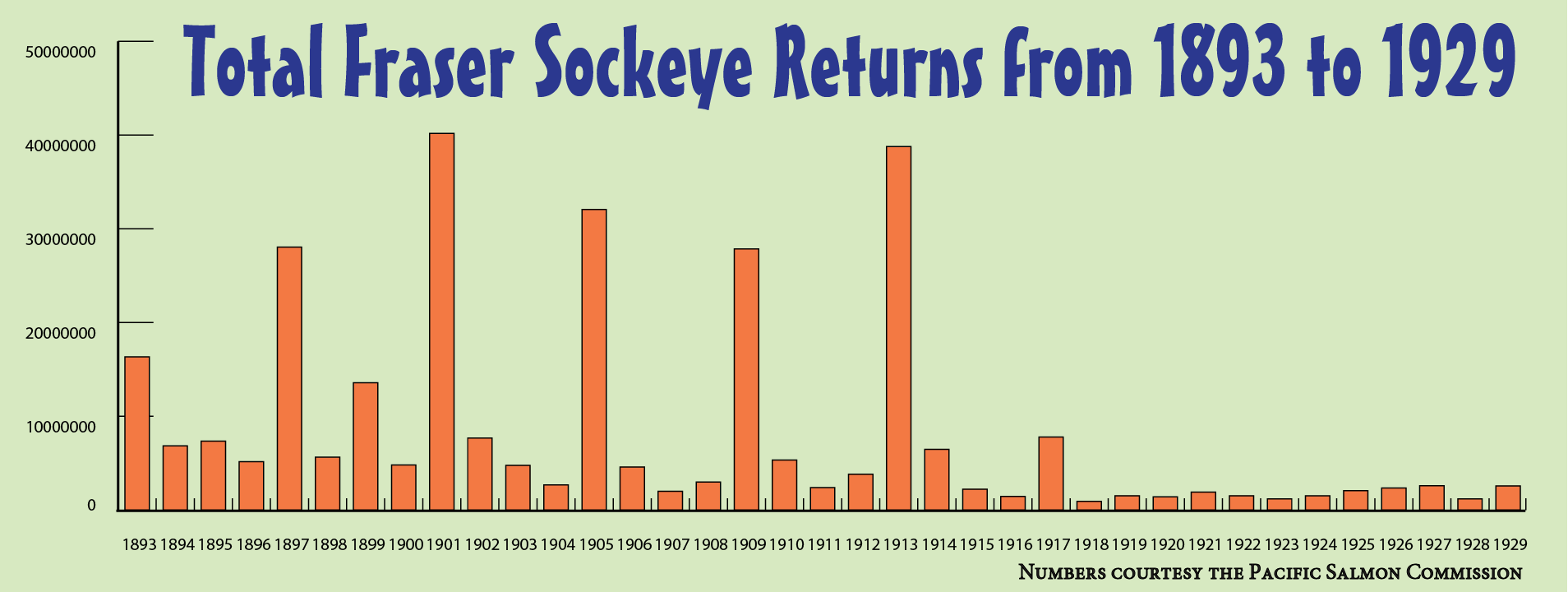
Through the 1920s the federal fisheries denied that the Hell’s Gate slide had a negative impact on the salmon runs. Major J.A. Motherwell, the dominion inspector of fisheries for British Columbia was quoted in the Vancouver Province on November 25, 1927, he stated “there is absolutely no evidence to indicate that great numbers of sockeye salmon have died in the blockade at Hell’s Gate.” The fishermen did not agree. Francisco Martinez expressed his displeasure with the government in a letter to the editor in 1929 for “the destruction of the fish in this province… by the Government officials allowing the B.C. Electric and the Canadian National Railway to spoil the spawning grounds, and block Hell’s Gate on the Fraser River.[i]
It was not until 1929 that the salmon stocks recovered, though not to the pre-1913 levels, with “the largest pack made from those waters since 1913.[ii] British Columbia produced forty-five percent of Canada’s fishery products and employed 20,435 people.
[i] “Asks That Railway Companies Be Punished for Spoiling Fisheries”, Vancouver Sun, August 25, 2919, 8.
[ii] Report of the Commissioner of Fisheries for the year ended December 31st, 1929, Victoria: Legislative Assembly, J6.

Read more…
We acknowledge that the land on which we live, work, and play is the traditional and unceded territory of the Katzie First Nation and the Kwantlen First Nation Peoples. We respectfully honour their traditions and culture.